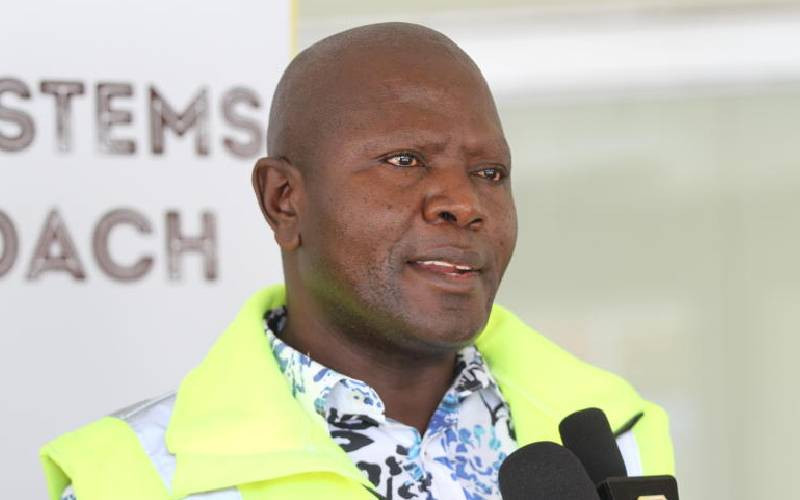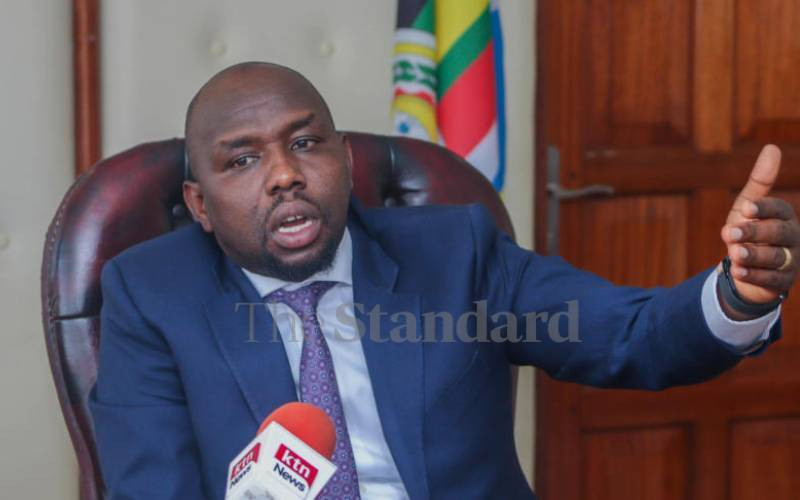By Antony Gitonga
It’s a cold dark morning as the first rays of sunlight hit the sleepy village of Kinungi in Naivasha.
From one homestead to another, cockerels come to life as their crows reverberate from valley to valley. Mating mongrels chase each other around mud-walled houses, howling and barking.
Soon smoke will billow from the houses as mothers prepare breakfast for their families, with men heading to cowsheds to milk the cows.
In no time, the snaking village paths will be full of parents escorting their children to school across the busy Nairobi-Nakuru highway.
They will walk past scores of graves that dot the village.
A passerby may be surprised by the high number of parents clutching the hands of their children tightly by the roadside.
But to locals, this is the norm. It’s a matter of life and death
Parents must help their children cross the road every morning and evening. And as the day progresses, shops, the open-air market and even bars come to life.
Screeching brakes, breaking glasses, a loud thump followed by screams and wails, however, disrupt the centre’s peace.
Villagers rush to the highway immediately. Lying on the middle of the road is a bleeding elderly woman.
Her life has just been snapped short by a speeding driver.
Normal occurence
This is a normal day for hundreds of people in Kinungi village and other shopping centres along the Naivasha section of the busy highway.
Stay informed. Subscribe to our newsletter
When the highway was constructed in the early 1980s, locals were full of hope that their lives would change for the better and that the one-shop centre would open up.
True to their hopes, the shopping centre is one of the fastest growing along the highway. Their lives have changed albeit negatively.
The trading centre has been identified as a blackspot, with one person getting knocked down every week by speeding motorists.
According to the latest statistics, more than 200 people have died on this section of the road since it was constructed, the highest number on this highway that connects Kenya to neighbouring countries.
It is feared that the number could be higher, as other victims rushed to hospital succumb to injuries while undergoing treatment.
The latest incident was on Tuesday when a mother of two was killed in a hit-and-run accident.
James Kabono, a local leader, says the majority of those killed are schoolgoing children and women. Most of them were hit when they were either walking or crossing the road.
Hit-and-run
He says 90 per cent of vehicles involved in the accidents do not stop, denying affected families compensation and justice.
“We have raised the issue with our leaders and even the two former heads of states (Kibaki and Moi) to put bumps or a footbridge near the shopping centre without any success,” Kabono says.
The leader says locals are threatening to close the road with coffins until their grievances are addressed.
He admits that among those killed are drunkards, adding that the number of deaths is on the increase. A third of the homes in the area have lost loved ones to road accidents.
“We have shed enough tears and dug enough graves. We shall not sit back and watch as our parents, brothers and sisters die on this section of the road again,” he says.
Kabono tells The Standard on Sunday majority of those killed in the accidents are students who are either going to or leaving school, robbing the center of the most resourceful people.
“Early in the year we lost five people, including a student, who were hit by speeding vehicles,” he said.
Kabono says the worst accident happened in 2009, when nine members of a family were killed as they were crossing the road.
He tells of the pain, economic and financial losses locals have incurred. “I have personally raised the issue with former Presidents Moi and Kibaki, all MPs who have served Naivasha, but 30 years down the line we are still waiting. And paying with our lives,” Mr Kabon says.
One old ambulance
For him, the only solution lies in laying bumps along the highway to curb speeding or erecting a foot-bridge. He says bumps have been erected in Kikopey on the same highway and wonders why the area has been forgotten.
Former area MP John Mututho says he raised the issue with various government ministers during his tenure, but no action was been taken. Mututho also apportions blame to the Ministry of Roads for the deaths saying he raised the issue in Parliament without success.
He notes that only a footbridge or an underground path will help curb accidents in the area and blames the “poor road design” for the deaths.
“The centre is constructed next to the highway and vehicles going downhill are always speeding which is a sure recipe for death,” he says.
Naivasha OCPD Charles Kortok admits that the number of deaths on the section of the highway are higher compared to other areas. He, however, blames the high number on drunkards. Kortok says majority of the bars are located on one side of the highway and many revellers get hit while crossing the busy road.
“Majority of the accidents involving pedestrians occur at night when our traffic officers are not on the road and majority of those hit are drunkards,” he says.
Speed guns
However, the number of accidents has dropped significantly since the introduction of speed-guns on the Naivasha section of the highway.
“Many drivers are aware that the speed-gun is operational during day time and at night,” he says.
Nearby Naivasha District Hospital, where many accident victims are rushed to, is poorly equipped and staffed and cannot deal with some of the injuries. On many occasions, accident victims are forced to lie on the floor as they wait for treatment.
With only one old ambulance, over worked staff and archaic equipment, sometimes saving the lives of the injured becomes near impossible.
Dr Joseph Mburu, the officer in charge of the hospital, admits that services in the facility are overstretched due to the high number of patients from nearby flower farms.
“It’s true we need a trauma centre on the highway, more nurses, an ambulance and equipment to deal with accident victims who are rushed here for treatment,” Dr Mburu tells The Standard on Sunday.
 The Standard Group Plc is a
multi-media organization with investments in media platforms spanning newspaper
print operations, television, radio broadcasting, digital and online services. The
Standard Group is recognized as a leading multi-media house in Kenya with a key
influence in matters of national and international interest.
The Standard Group Plc is a
multi-media organization with investments in media platforms spanning newspaper
print operations, television, radio broadcasting, digital and online services. The
Standard Group is recognized as a leading multi-media house in Kenya with a key
influence in matters of national and international interest.
 The Standard Group Plc is a
multi-media organization with investments in media platforms spanning newspaper
print operations, television, radio broadcasting, digital and online services. The
Standard Group is recognized as a leading multi-media house in Kenya with a key
influence in matters of national and international interest.
The Standard Group Plc is a
multi-media organization with investments in media platforms spanning newspaper
print operations, television, radio broadcasting, digital and online services. The
Standard Group is recognized as a leading multi-media house in Kenya with a key
influence in matters of national and international interest.









